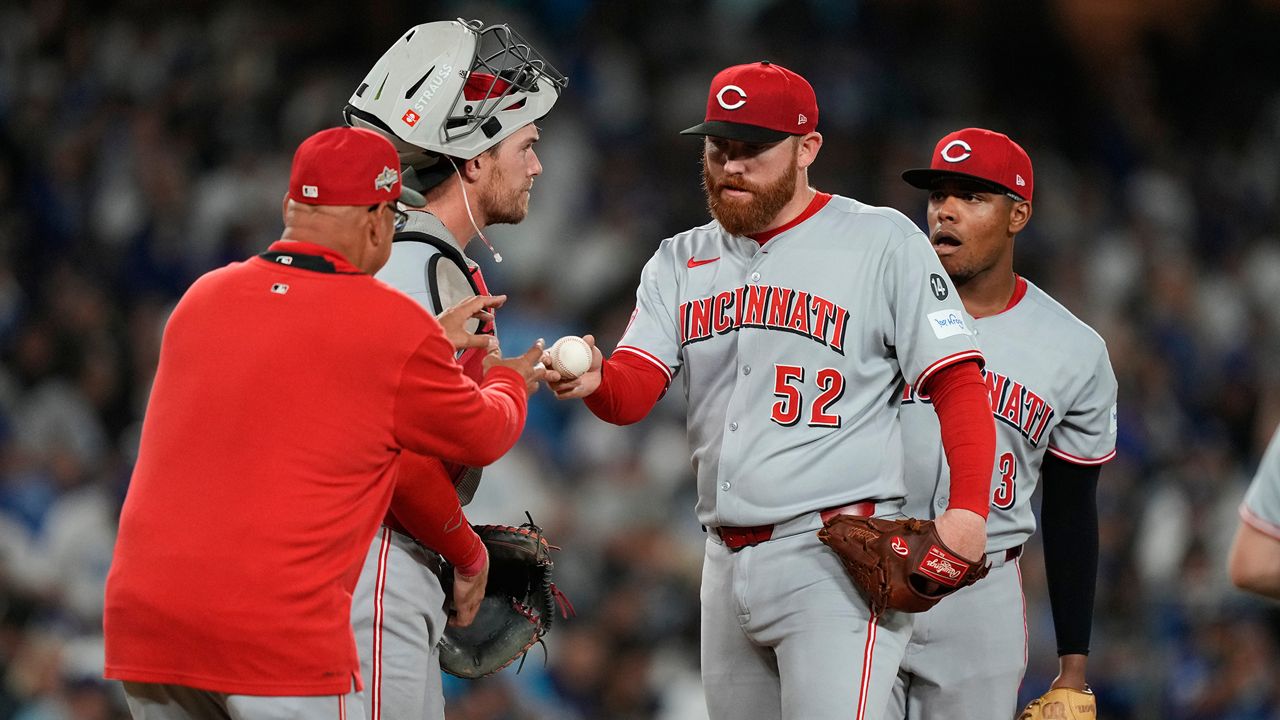The Cincinnati Reds are entering the offseason with an unusual advantage—a surplus of promising starting pitchers—and a handful of glaring needs elsewhere on the roster. Coming off a rare playoff appearance, the team finds itself at a crossroads: should they trade from their rotation depth to strengthen their offense and defense?

President Nick Krall has hinted that the Reds might consider using their pitching depth as trade leverage, but insists any move will be made carefully.
“I wouldn’t say no, but when you trade pitchers, you’ve got to backfill them somehow,” Krall said. “We all know how it works—guys get hurt, innings run out, things happen.”
Even without Zack Littell and Nick Martinez, who are likely headed for free agency, the Reds’ rotation remains loaded. Returning are All-Stars Hunter Greene and Andrew Abbott, innings leader Brady Singer, and lefty Nick Lodolo, who has at times looked like the ace of the staff. Add to that rookie Chase Burns, who impressed in eight starts, and Rhett Lowder, returning healthy after missing 2025, plus Brandon Williamson and Julian Aguiar—both coming off Tommy John surgery. That’s eight strong options for five rotation spots, not even counting depth arms like Chase Petty.

It’s the same type of “good problem” the Reds once had with their young infield talent, which helped them acquire Singer in last year’s Jonathan India trade. But Krall and GM Brad Meador caution that trading from strength isn’t always a guaranteed win.
“It’s really hard to say we’re going to go trade a pitcher—and I’m not sure you’re going to trade one for offense,” Krall explained. “You might end up trading for a prospect and then have to buy the offense in free agency.”
One name that’s sure to draw attention is Hunter Greene, a two-time Opening Day starter with a 100-mph fastball, All-Star credentials, and three more seasons (plus a club option) on his $42 million contract. Greene’s talent and cost control make him a highly attractive trade chip—one that could bring back a major-league hitter or free up payroll space to sign one in free agency.
“I don’t want to speculate on who might get traded,” Krall said when asked about Greene. “We haven’t had conversations with other clubs yet. I don’t know what their needs are or who’s available.”
Still, it’s inevitable that teams will call. Quality starting pitching is the most valuable asset in baseball, and Cincinnati appears to have plenty of it. But Meador warned that the team must manage innings limits carefully for pitchers returning from injuries.
“You’ve got to manage the innings for a lot of these guys,” Meador said. “You can come up short really fast if you start moving pitching.”

Beyond the pitching logjam, the Reds face several big-picture challenges this offseason:
•Budget Unclear: Krall doesn’t expect to know the payroll target for several weeks. Cincinnati spent just under $120 million this year and may only have about $17 million to add players unless they move contracts or trade arbitration-eligible talent.
•Offense and Defense Issues: Hitting and fielding remain the biggest weaknesses.
•Internal Improvement: Players like Matt McLain and Ke’Bryan Hayes could rebound and provide internal boosts.
•Power Need: The lineup lacks a true power threat—ideally a 35–40 home run hitter who can protect Elly De La Cruz and boost run production.
“Would you like more power? Sure. More defense? Sure,” Krall added. “But we’re not looking for one-dimensional players.”
With a Hall of Fame manager signed for two more seasons and momentum from a playoff run, the Reds are positioned to take another leap—if they make the right moves. Whether that means trading a key arm like Greene or relying on internal development, Cincinnati’s deep pitching pool will likely define one of the most intriguing offseasons in baseball.
Leave a Reply